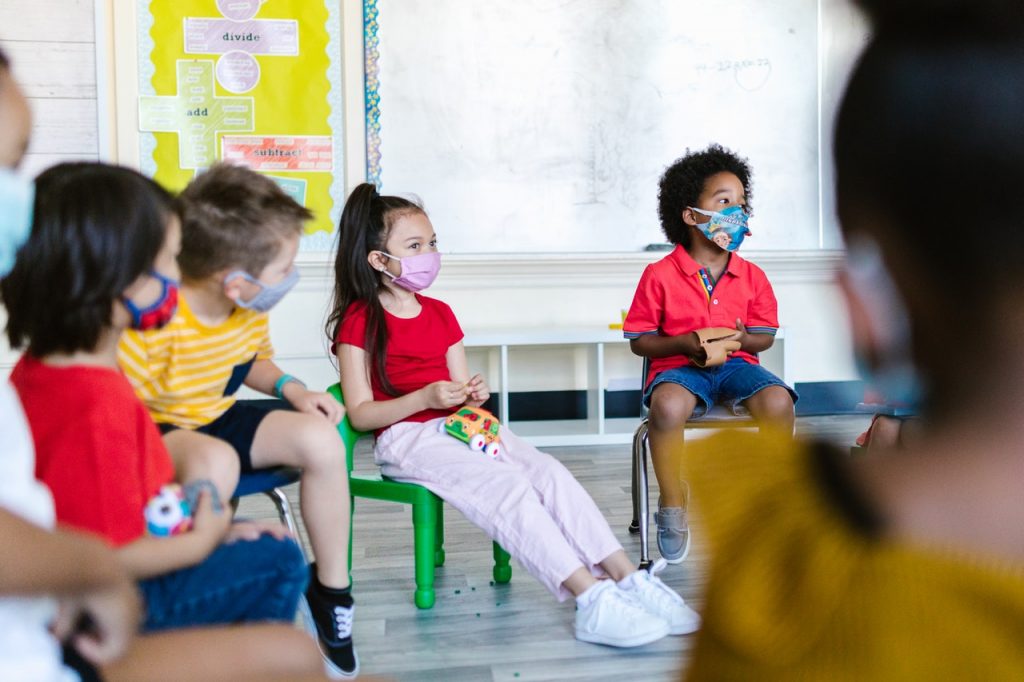Science
Children struggle more than adults to recognize masked faces

Face perception is one of the most important visual abilities for humans. A quick glance at a person’s face provides us with rich and socially relevant information, including race, age, gender and emotional state.
Humans typically process faces as a unified whole instead of relying on specific facial features like eyes, nose or mouth. Scientists refer to this type of processing as “holistic processing,” and believe that it is essential to recognizing faces quickly and accurately.
Our research explores how mask wearing — the new reality imposed by the COVID-19 pandemic — changes how children and adults process and perceive faces.
Facing difficulties
Scientists have promoted mask-wearing as one of the most important and effective tools to reduce COVID-19 transmission. Many governments around the world required face masks in public places, especially when physical distancing is less feasible. Wearing a mask became prevalent in diverse social settings including on public transportation, in schools and at sporting events and concerts.
However, because face masks conceal the lower part of the face, our research group was not surprised to find a reduced ability to learn to recognize new faces when they are masked. Notably, we found that when people had difficulty recognizing masked faces, there were changes in how faces were recognized. Masked faces were processed in a less holistic manner, and more in a feature-by-feature way.
Sensitivity to faces appears early in life. In fact, newborns are already sensitive to the spatial arrangement of a face, and stare more at visual patterns that resemble this organization (two eyes above a nose above a mouth). Despite this early sensitivity, face perception develops slowly, and some studies suggest that this ability is not fully matured even in teenagers. Given that their face processing system is not fully developed, we wondered if children might have even greater difficulties recognizing masked faces compared to adults.
Impaired recognition
To test this question, we conducted a study using a version of the face recognition test used in adults, but specially designed for children. This test includes increasing levels of difficulty: The child participants are presented with photographs of other children’s faces, and they need to choose which face they had seen during the study phase. To make the test more challenging, the faces are presented from different viewpoints, and external cues, like hair, are removed.
We tested 72 children. Half of them completed the regular version of the test, while the other half completed a “masked” version of the test, where the children in the photographs appeared to be wearing masks. Each child completed the test twice, once with faces presented upright and once with faces presented upside down.
Turning a face upside down stops people from processing the faces in a holistic way because the typical spatial organization of the face (two eyes above a nose above a mouth) is distorted. When we try to recognize faces without masks, we are much worse at doing so when the face is upside down. This is because we are no longer able to rely on our natural holistic processing system and, instead, we rely on a weaker feature-based strategy.
We assumed that if participants were just as poor at recognizing upright faces with masks as they were at recognizing upside-down faces with masks, it would mean that these masked faces are no longer being processed in a holistic way.
The results of the study were clear. First, we found that children were impaired in recognizing masked faces. The group of children who completed the masked version showed a 20 per cent reduction in their test score. This was even worse than what we had originally found in adults (15 per cent reduction), suggesting that children might find it even more difficult to recognize faces with masks than adults.
We also found evidence for a smaller “upside-down” effect for masked faces. This finding indicates that children processed the masked faces in a more feature-to-feature fashion, which might explain some of their difficulty in recognizing masked faces.
Children’s recognition cues
These new findings raise a number of important questions that scientists could address in the future. First, do children learn to use other cues to recognize friends and teachers — for example, by relying on people’s voices or movements? Second, would children become better at recognizing masked faces as they gained more experience with such faces?
This seems likely because previous research found that children’s brains are more adaptable and that experience can shape their visual abilities. Third, do difficulties recognizing masked faces affect children’s ability to communicate with others and form meaningful social relationships?
It is important to emphasize again that masks are one of the most effective tools in our effort to reduce the spread of COVID-19 and keep people safe and healthy. Despite the difficulties that adults and children experience with recognition of masked faces, any decisions about mandatory mask wearing should be informed by public health experts.
At the same time, it’s important to understand how masks may change how children perceive faces so that we can determine whether children are better able to adapt to masks, and which cues or strategies help to improve recognition of masked faces.![]()
Erez Freud, Assistant Professor, Psychology, York University, Canada and R. Shayna Rosenbaum, Professor and York Research Chair, Psychology, York University, Canada
This article is republished from The Conversation under a Creative Commons license. Read the original article.





















